Saving your mums in late fall is one of the best ways to stretch next year’s autumn decorating budget – especially when you consider just how easy it is to keep your mums alive over the winter to grow and bloom again!
Mums, officially known as chrysanthemums, are the most popular plant gardeners turn to for adding big fall color. The durable plants flower for weeks on end and look incredible in pots, containers, baskets – and when directly planted in the landscape. But can they ever be expensive to keep buying year after year!
With each passing season, the price tag for this autumn favorite seems to soar even higher. Even small pots of mums in stores can now top $10 a piece – and large pots and baskets can fetch upwards of $50 or more. One thing is for sure, it can get quite expensive when it comes to decorating.
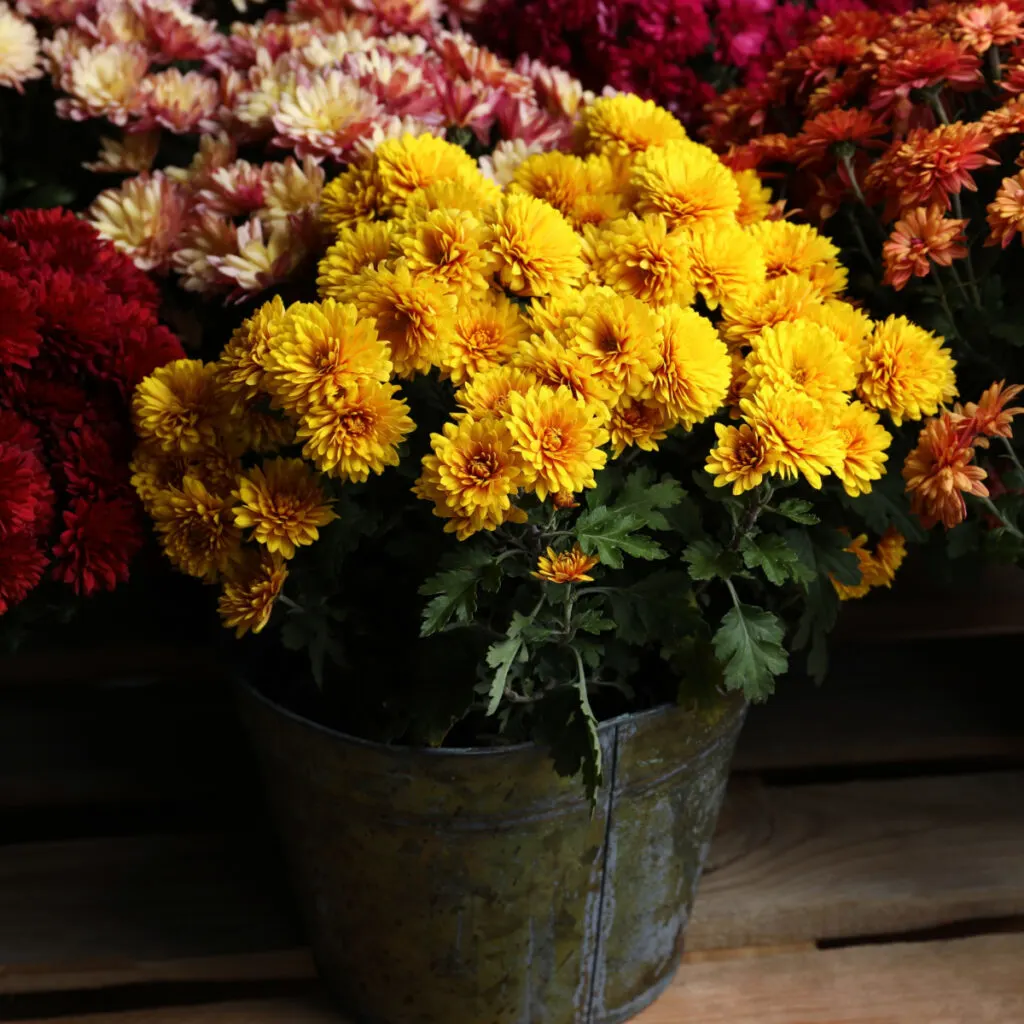
But here’s the good news – with just a bit of effort, you can save your mums from year to year. And not only that, you can even divide large mums to create even more plants for more color. Talk about a great way to not only save on the budget, but decorate bigger and better than ever next year!
Not All Mums Are The Same – How To Keep Mums Alive Over The Winter
It’s important to note that not all varieties of mums are good for saving. There are actually two distinct types of mums, hardy and floral – and only one, hardy, can be overwintered.
The difference between the two is mainly in their roots. Floral mums have very shallow roots. Because of this, they simply can’t stand up to the rigors of wintertime when planted outside. Their shallow roots quickly freeze out and the plant dies off in the process.
Hardy mums on the other hand have a much deeper root system. Hardy mums, often called garden mums, can survive the perils of winter far more easily. In fact, hardy mums can usually overwinter successfully all the way to Growing Zone 5.
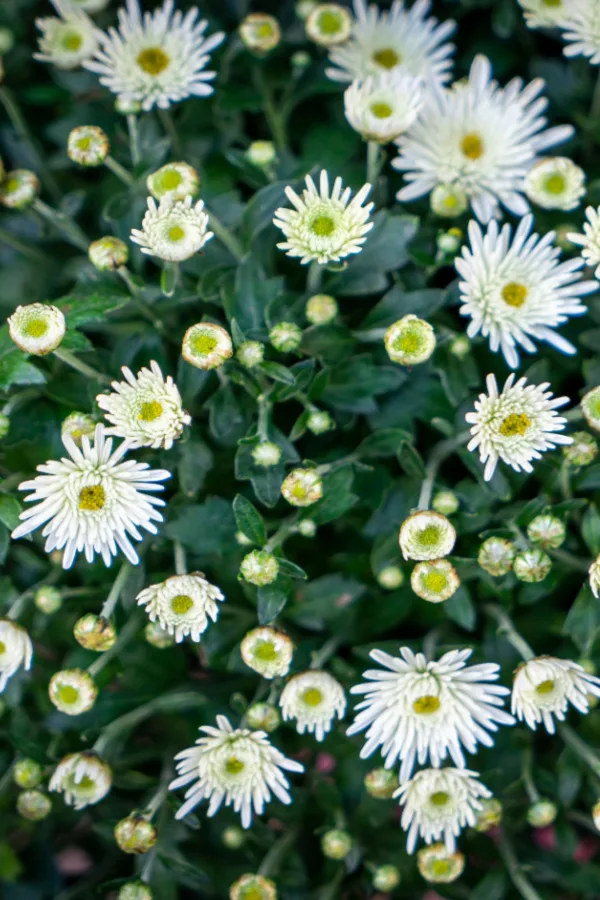
With all of that said, if you want to overwinter and save your mums, you need to start by making sure to purchase hardy or garden mums and not the floral mum variety. And how do you know? Actually, it’s fairly easy to tell just by looking at the plant.
For starters, most nurseries and garden centers usually have plants clearly marked. If not, as a rule of thumb, plants with smaller pots and more compact foliage and blooms tend to be floral. Mums with larger stems, foliage and blooms are most likely hardy.
How To Keep Mums Alive Over The Winter – The Simple Steps To Success
Mums that are are in pots for decorating in the fall will need special protection to make it through the winter. Simply leaving your “hardy” mum outdoors in its original pot will almost always result in the plant dying off.
This is because in pots, the plants roots systems are extremely vulnerable to the constant freezing and thawing winter temperatures bring. And with only a thin line of clay or plastic between the roots and the outdoors, the roots almost always die out.
You can take mums out of their container to plant them directly into the landscape, but this need to be done in early fall. Unfortunately, by planting in late autumn, mums simply don’t have enough time to establish firm roots in the soil. And without firm roots, the constant thawing and freezing will usually still takes its toll.
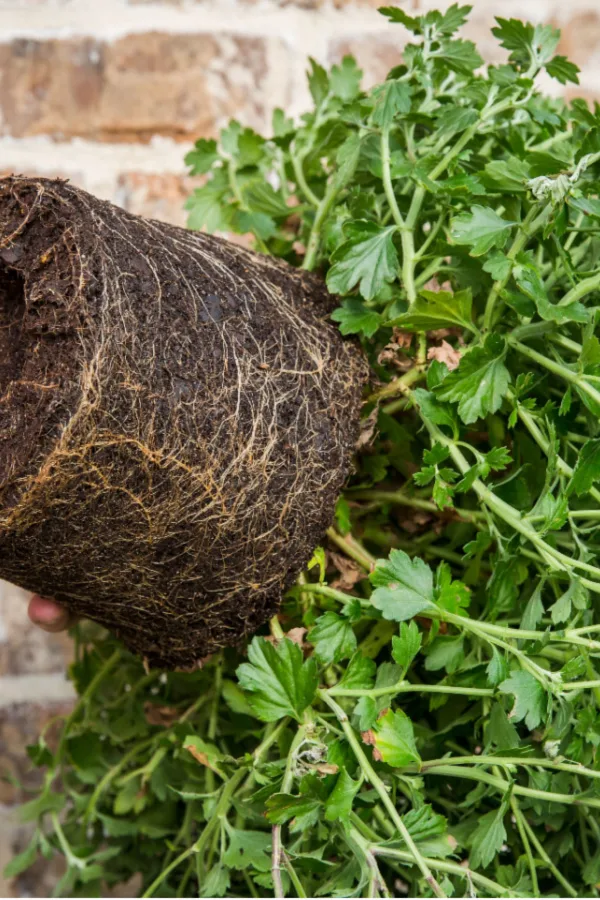
If you do want to save your plants by planting them directly in beds, they need to go in the ground at least four to six weeks before the first frost or hard freeze. Unfortunately, that is often hard to do when using mums for late autumn decorating.
Because of that, overwintering mums indoors until spring is usually the best option. The good news here is that you are not bringing it in to grow as a houseplant, but instead just giving it a space where it can go dormant until spring. Luckily, this requires little space or effort!
Overwintering Mums Indoors – How To Keep Mums Alive Over Winter
When trying to save your mums and overwinter, it’s extremely important to start by keeping your mums safe from any extreme cold.
If a frost or freeze is in the forecast before decorating season is over, always be sure to bring the plants inside overnight or cover. As they sit in a pot or container, a single hard freeze can be enough to kill off the roots.
Before bringing your mum indoors, start by removing all of the spent blooms and flowering blooms that remain. Not only can they create a mess indoors as they fall off, this also helps the plant conserve energy for next year.

This can be a fast process. Simply take a pair of hedge shears and cut the plant back to about three to four inches in total height. It will look quite sparse at this point, but it allows it easily overwinter without trouble or mess. Product Affiliate Link: Garden Hedge Shears
Storing Mums Indoors – How To Keep Mums Alive Over Winter
When storing indoors, select a cool location that receives little light. A cool, dark basement or unheated garage with insulation works great for this purpose. If not available, select the coolest, darkest room of your house.
This is key in allowing the mum to go dormant, but not risk freezing out. As for watering, giving the soil a little hydration every two weeks or so is ideal. You do not want the soil to completely go dry, but instead, stay just slightly moist. All you need to do now is to wait for spring to roll around!
Planting Mums In The Spring – How To Overwinter Mums
The following spring, as soon as the soil warms and the threat of a hard freeze is over, it’s safe to plant in the landscape or to keep in pots and move outdoors. Mums perform best in fertile, well-drained soil. When planting into the ground, always add in a bit of compost to help their root systems establish more quickly.
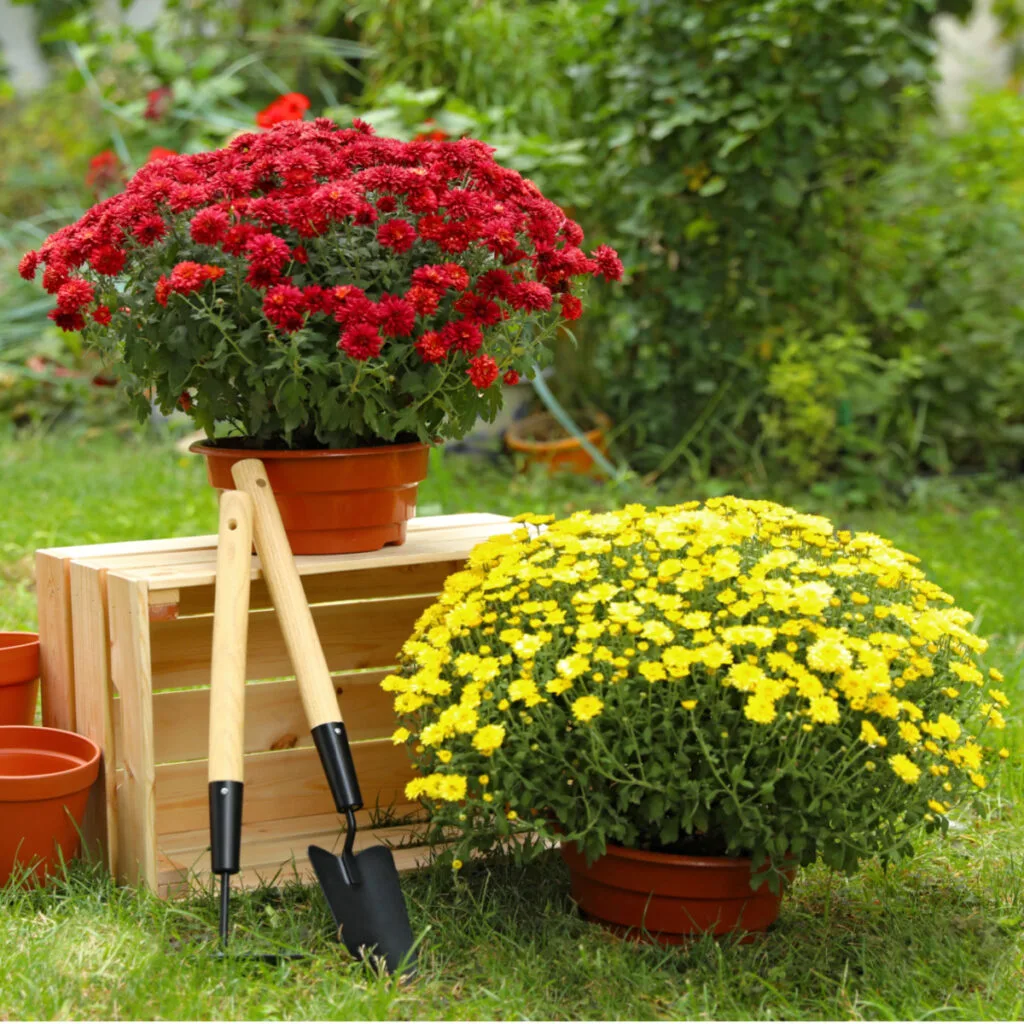
If you want your mums in pots, you will need to replant with fresh soil. In addition, you will also most likely have to move it to a larger vessel. This will accommodate the extra root growth that will occur over the summer and keep it from becoming root bound.
Keeping them in their old pot with old soil will result in poor plant performance. This is because the soil most likely lost all of its nutrients during the previous year’s growth. See: How To Compost Old Potting Soil To Use Again
Once planted, either in the soil or in pots, cut the stems back to just above the soil line. Within a few weeks, you should start to see new growth emerging. Left to grow on their own, mums will normally bloom in mid to late summer. With this in mind, if you are looking for brilliant fall color, you will need to cut them back a few times too keep them from blooming too early.
Pinching Back Mums
Pinching back is the “official” term of the cutting back process. The term simply means to cut or pinch back the plant a few inches. For most plants, trimming back in late June and again in early August works best. This allows the new growth to grow in a more compact fashion. It also means a fuller fall blooming cycle.

Spring & Summer Mum Care – How To Overwinter & Save Mums
In the fall of the second year and beyond, for mums planted directly into the landscape, there is no need to bring the plants indoors. The roots of these plants are now firmly established and can handle the winter with a bit of extra protection.
Unlike many other herbaceous perennials that can be cut back to the ground in the fall, it’s best to leave mums foliage in tact through the winter. This helps give them extra protection from winter’s cold and harsh winds.
In addition to leaving the foliage, apply a few inches of straw, leaves or mulch to the base of the plant. This aids in insulating the roots from extreme cold, and from constant thawing and freezing. In the spring, cut back the foliage to allow the plant to spring forth new growth once again.
Just as with the previous year, you will need to cut back the growth in June and early August to force fall blooms. If you re-pot your mums, you will also once again need to bring them in over the winter for protection.
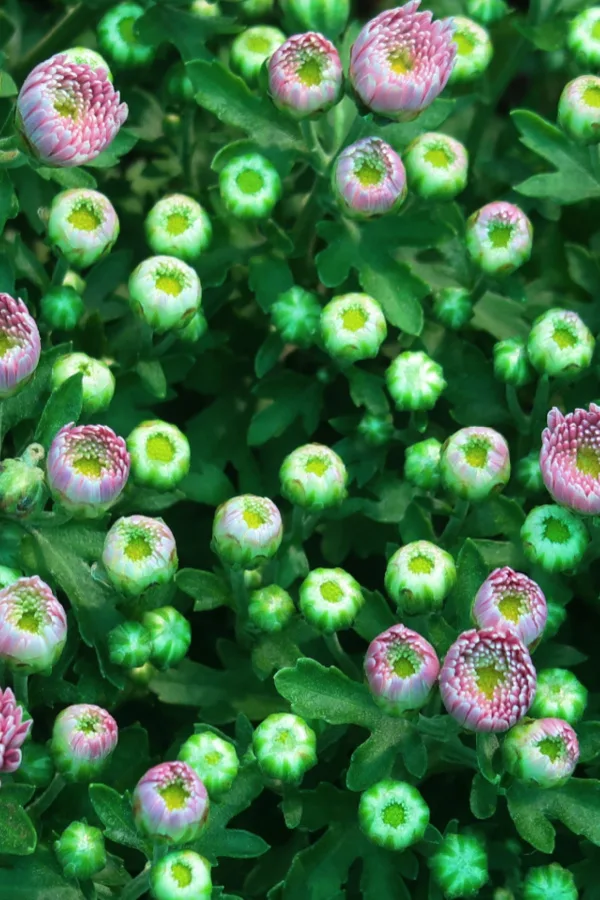
Dividing Large Mums – How To Overwinter & Save Mums
With a few years growth, your mums may reach a size where splitting is necessary. Spring is the best time for this chore, as it allows the plant to re-establish roots throughout the summer. Splitting not only keeps plants healthy and blooming strong, it is also an excellent way to double your plants for free.
Here is to overwintering your mums this fall, and to having lasting autumn color in your landscape year after year.
Follow Our Facebook Page For Great Gardening Tips And Advice! This Is My Garden Facebook Page
This Is My Garden is a garden website created by gardeners, for gardeners. Jim and Mary Competti have been writing gardening, DIY and recipe articles and books and speaking for over 15 years from their 46 acre Ohio farm. They publish three articles every week, 52 weeks a year. Sign up today to follow via email, or follow along!
